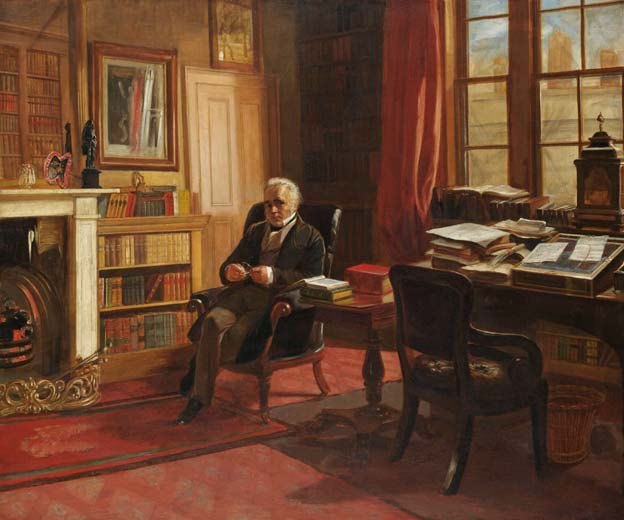English language teaching (ELT) in India has a long and complex history, deeply intertwined with the country’s colonial past and its current aspirations as a global economic power. Today, English is widely recognised as a language of opportunity, education, and social mobility in India. Implementing effective ELT practices faces numerous challenges while presenting significant opportunities for growth and innovation.
Macaulay’s Minute on Indian Education
The roots of English in India trace back to British colonial rule when it was introduced as the language of administration and higher education. Initially, it was limited to the elite, who needed to assist the British administration. During the early 19th century, the British East India Company was consolidating its control over India, and there was a growing need to establish a coherent education policy. The existing education system in India was primarily based on traditional Sanskrit and Persian learning, with little emphasis on Western scientific and literary knowledge. Thomas Babington Macaulay, a British historian and politician, played a crucial role in shaping the education policy in India. His Minute on Indian Education, written in 1835, is a seminal document in the history of British India. This document played a crucial role in shaping the education policy of British India, advocating for the promotion of English as the medium of instruction and the propagation of Western knowledge.
Before Macaulay’s Minute, there were efforts to support both Oriental and Western education in India. The Charter Act of 1813 had allocated funds for education, but there was debate over whether to promote indigenous learning or Western education. The debate centred around two factions: Orientalists, who supported the preservation and promotion of traditional Indian education and languages like Sanskrit, Arabic, and Persian, and Anglicists, who advocated for the introduction of Western education and the English language.

Macaulay argued that traditional Indian literature and science were less practical than Western knowledge. He famously claimed that “a single shelf of a good European library was worth the whole native literature of India and Arabia”. Macaulay asserted the superiority of English over classical languages like Sanskrit and Persian. He believed English was the key to modern scientific, literary, and philosophical advancements. Macaulay proposed educating a class of Indians who would act as intermediaries between the British rulers and the Indian masses. This educated class would “interpret between us and the millions whom we govern“, essentially serving as a cultural and administrative bridge.
Macaulay emphasised the practical benefits of Western education, such as better governance, economic development, and moral improvement. He argued that Western education would lead to a more civilised and progressive society in India. He also advocated for allocating government resources to establish English-medium schools and colleges and suggested gradually phasing out funding for traditional Oriental education.
Macaulay’s recommendations were largely accepted, leading to significant changes in the educational policy of British India. The English Education Act of 1835 formalised the promotion of English as the medium of instruction in Indian schools and colleges. The policy created a bilingual Indian elite proficient in English and familiar with Western knowledge and administrative practices. This educated class played a crucial role in India’s subsequent social, political, and cultural developments.
Macaulay’s Minute had a profound and lasting impact on Indian education, contributing to the widespread use of English in India. It facilitated India’s integration into the global economy and participation in international discourse. However, it also led to the marginalisation of traditional Indian knowledge systems and languages. The Minute has been criticised for its Eurocentric bias and its dismissive attitude towards indigenous cultures and knowledge. Critics argue that it contributed to cultural alienation and a sense of inferiority among Indians regarding their heritage.
English in Independent India
The Indian Constitution, adopted in 1950, recognised Hindi as the official language of India and English as an associate official language for a transitional period of 15 years. This was meant to facilitate a gradual shift from English to Hindi. Due to opposition from non-Hindi-speaking states and the practical difficulties of implementing Hindi nationwide, the Official Languages Act of 1963 allowed for the continued use of English indefinitely for official purposes alongside Hindi.
The Indian government introduced the Three-Language Formula in the 1960s to promote multilingualism. According to this policy, students are expected to learn three languages: their regional language, Hindi, and English. This policy cemented the role of English in the education system, ensuring that students across India had exposure to English from a young age.
English is widely taught as a second language from the primary level onwards in most states. In many urban and private schools, English is the medium of instruction. English remains the predominant medium of instruction in higher education, especially in professional courses such as engineering, medicine, and law. Universities and colleges often conduct courses, examinations, and research in English.
The National Curriculum Framework (NCF) emphasises communicative competence and the functional use of English. The aim is to develop students’ proficiency in reading, writing, speaking, and listening in English. State and national boards design textbooks that align with the NCF guidelines, focusing on interactive and student-centred learning approaches. Various programs and institutions are dedicated to training teachers in modern ELT methodologies. In-service training and workshops help teachers stay updated with the latest pedagogical practices.
Current Trends and Future Directions
Digital platforms, online courses, and educational apps have become increasingly common, providing additional resources for English language learners. Combining traditional classroom teaching with online instruction and interactive tools is becoming more popular. There is a growing emphasis on practical communication skills over rote learning. This includes activities that promote speaking, listening, and real-life application of language skills. Continuous and comprehensive evaluation methods that assess language skills holistically are being implemented. Efforts are being made to bridge the gap between different socio-economic groups, ensuring that quality English language education is accessible to all. Recognising the multilingual reality of India, there is a push towards integrating English teaching within the broader context of multilingual education.
The liberalisation of the Indian economy in the 1990s increased the demand for English proficiency due to the influx of multinational companies and the growth of the IT and service sectors. English proficiency is often associated with better job prospects, higher social status, and access to global opportunities. This has led to a surge in private English-medium schools and coaching centres.
Challenges in ELT
There is a significant disparity in the quality of English language education between urban and rural areas and between private and public schools. Students in rural and regional areas often have limited exposure to English outside the classroom, affecting their language acquisition. Overcrowded classrooms hinder personalised attention, interactive activities, and effective classroom management. Limited resources and traditional teaching methods hinder effective language teaching.
Curricula and teaching materials often do not reflect the linguistic and cultural diversity of Indian students. Cultural differences make it difficult for students to relate to English language materials, which often reflect Western contexts and idioms. Adapting the curriculum to meet the diverse needs of learners across different regions and socio-economic backgrounds is an ongoing task.
Learners may transfer linguistic structures from their mother tongue to English, leading to errors in grammar, pronunciation, and syntax. Many teachers lack proficiency and pedagogical skills in English. Ensuring teachers are proficient in English and equipped with effective teaching strategies remains challenging. Traditional assessment methods may not accurately reflect language proficiency and communicative competence.
Consistent and supportive language policies are crucial for the effective implementation of ELT. Government policies should focus on improving infrastructure, providing resources, and promoting English language education across all regions.
From an ELT perspective, the status of English in India after independence highlights the language’s enduring significance in the country’s educational framework. While English continues to symbolise opportunity and progress, the challenges of ensuring equitable access, quality teaching, and relevant curriculum persist. As India moves forward, balancing the learning of English with the promotion of indigenous languages and cultures will remain a critical task.





























